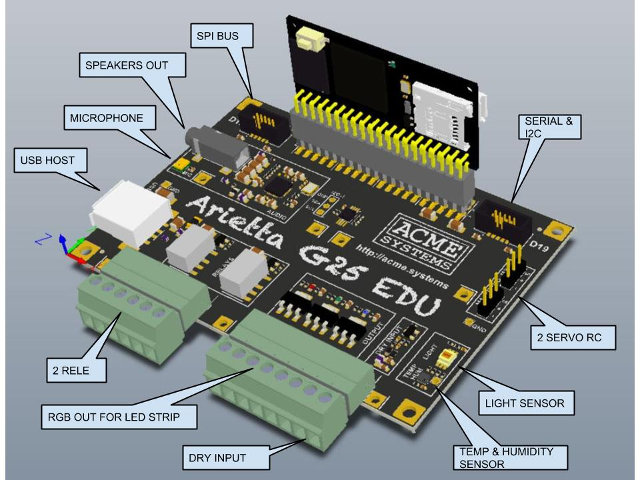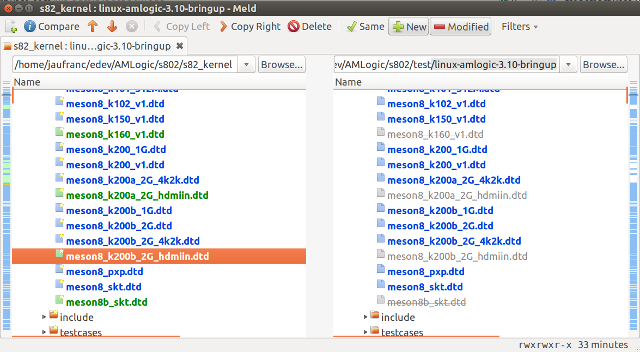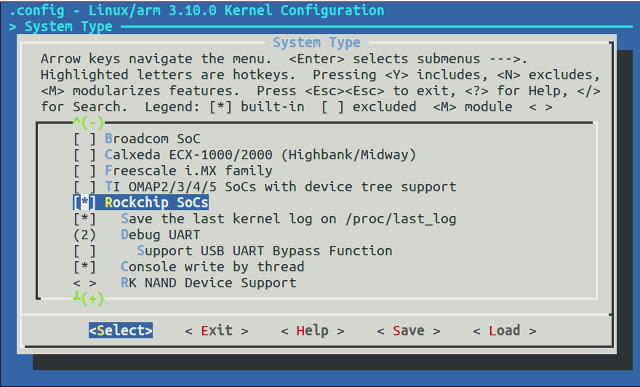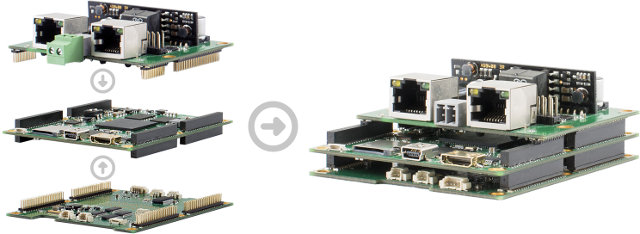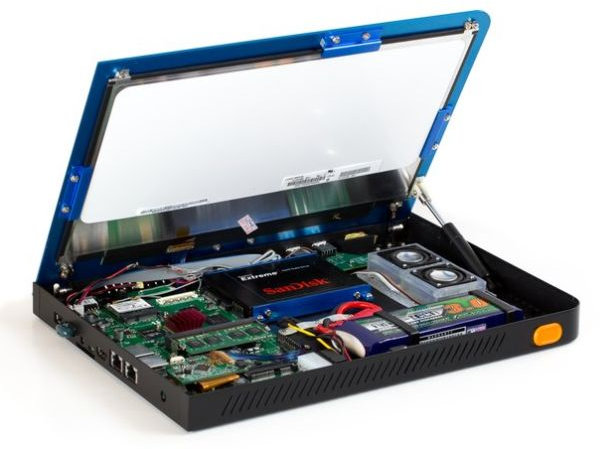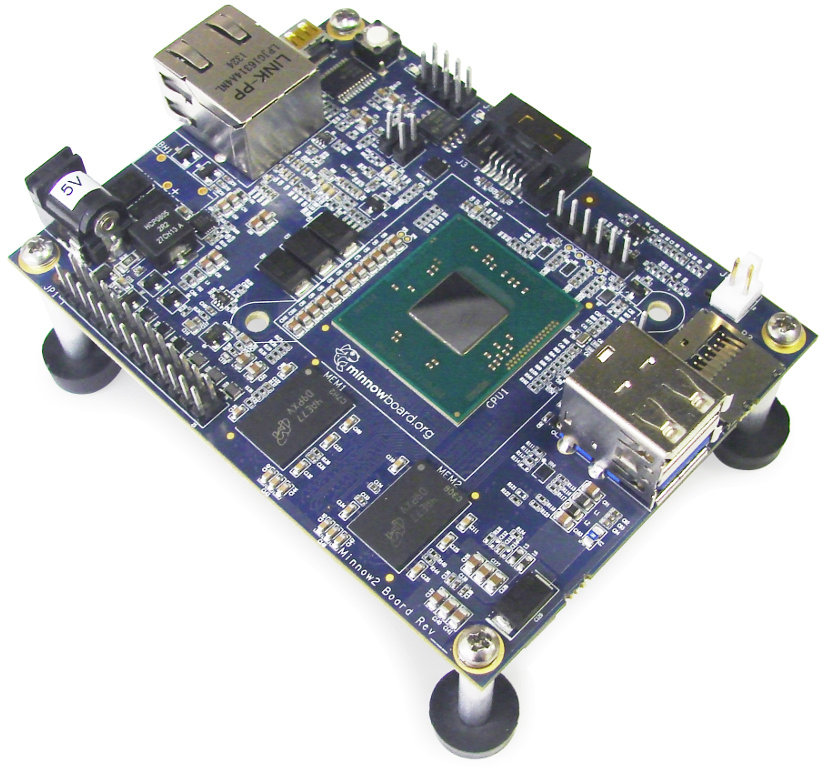Arietta G25 is a tiny system-on-module (SoM) powered by Atmel SAM9G25 ARM9 processor and running Linux that sold for a discount earlier this year (9.9 Euros) for early backers, and is now available for 20 Euros, and support an optional Wi-Fi module for as low as 7 Euros extra. Acme Systems, the company who made the board, is now considering designing and manufacturing an open source hardware baseboard for the module, and is asking for feedback from the community before going ahead. Currently the idea is to have a baseboard with the following: Arietta G25 SoM connector (Vertical mount) 1x USB Host port I2C Sensors – Temperature and Humidity sensor, Light sensor Mosfet output for RGB led strip 2x relay output 1x filtered dry input 2x servo RC motors output Audio interface with embedded microphone and jack for PC speakers using Wolfson WM8731 codec Expansion headers for external modules already […]
Linux Kernel 3.10.33 Source Code Released for Amlogic S802 (Part of Tronsmart Vega S89 SDK)
We already had the kernel source for Amlogic S802. The previous code found on Amlogic website, and based on Linux 3.10.10. I’ve been informed there’s a new release based on Linux 3.10.33, and apparently the code based used for Tronsmart Vega S89 (aka Beelink M8, S82), and the new Tronsmart Vega S89-H with proper Dolby & DTS support. Beside a new version, the kernel adds support for a new platform called “meson8 baby” and HDMI IN support, as well a several changes in AMlogic source such as GPU cooling.. All device tree files also seem to have been amended mostly with I2C and thermal settings. It is not a full release, and the hardware directory with GPU, TVIN, Wi-Fi, and NAND drivers is not included. Having said that, it should be possible to use the drivers from the previous release. Meson6 (Amlogic AML8726-MX) source code is also included, and appears […]
Yocto Project 1.6 “Daisy” Released
The Yocto Project Release 1.6 has just been announced. This release is codenamed “Daisy”, and features Poky 11.0.0, which is the reference system used by the project, but other systems could also be used. The Yocto Project is a framework that creates embedded Linux distributions, and is now being used by many Intel and ARM based embedded boards such as Wandboard, Atmel Xplained, Minnowboard MAX, and the Raspberry Pi. Some of the Yocto Project 1.6 features and updates include: Linux kernel 3.14 and 3.10 LTSI eglibc 2.19, gcc 4.8.2 Support for building Python 3 Toaster web UI for exploring build output Documentation – BitBake user’s manual improvment, and added section explaining how to “Write a New Recipe“. New reference BSP for beaglebone and edgerouter Change to use SHA512 password encryption with shadow by default Various performance improvement, and disk usage reductions. Add support for booting UEFI systems with gummiboot Image […]
Linux Kernel Source Code and Chromium OS Overlay for Rockchip RK3288
A few days ago, we’ve seen Chromium OS running on Rockchip RK3288 development platform. I’ve been informed the source code could have already been released via the newly registered rkchrome github account with Linux kernel 3.10.30 and the overlay files to build Chromium OS for RK3288. There’s also a u-boot repository but it is currently empty. This Linux kernel can also boot Rockchip RK3188 based Radxa Rock development board, but more tests are needed to see if it’s really usable. I’ll have a look at the Linux kernel, and try to build it, and leave the Chromium OS part for later or other people. Let’s retrieve the source code:
|
1 2 |
git clone https://github.com/rkchrome/kernel.git cd kernel |
We’ve got two kernel config files related to Rockchip in arch/arm/config:
|
1 2 3 |
ls arch/arm/configs/ | grep rock rockchip_chromium_defconfig rockchip_defconfig |
But since this is a recent 3.10 kernel with support for Flattened Device Tree support, and multi-platform support, there’s not much to be seen in these files, and […]
Habey HIO Project ARM Board and HIO Wallpad PoE Automation Panel (Crowdfunding)
Habey has recently unveiled HIO Project, a $100 ARM Linux board designed for rapid prototyping powered by Freescale i.MX6 dual lite or quad, and shortly after, the company launched a Kickstarter project for HIO Wallpad, an in-wall Power-over-Ethernet touch controller for home or office automation embedding HIO Project boards. HIO Project Boards HIO Main Board (HIO-EMB-1200) specifications: Soc – Freescale i.MX6 Dual Lite or Quad ARM Cortex A9 processor @ 1 GHz + Vivante GPU System Memory – 1GB DDR3 Storage – 4G iNAND flash, 1x micro SD socket Video Output – 1x HDMI Audio – 1x on-board audio codec with 1W Amplifier built-in to I/O expansion headers Connectivity – 1x GbE PHY to I/O expansion headers Expansion Connectors: 1x PCIe PHY to I/O expansion headers 8x 50-pin 1.27mm pitch female header for I/Os: 24bit Parallel Display Port, dual channel 24bit LVDS, MIPI DSI up to 24bit, MIPI CSI up […]
Embedded Linux Conference 2014 Schedule
The Tenth Embedded Linux Conference (ELC 2014) will take place on April 29 – May 1, 2014 at the San Jose Marriott in San Jose, California. The event will feature 90+ sessions on embedded Linux, Android and IoT with over 450 attendees expected to attend. It will also be co-located with Android Builders Summit and the AllSeen Alliance Hackfest. Even if you can’t attend it’s still interesting to see what will be discussed at the event to get a grasp of on-going developments, learn a few things about different optimization techniques, and so on. So I’ve gone through the sessions’ description, and I’ve designed my own virtual schedule with sessions that could be of interest. April 29 9:00 – 9:30 – Keynote: The Paradox of embedded and Open Source by Tim Bird, Sony Mobile Linux has taken the embedded world by storm. Billions (with a ‘B’) of devices have now shipped […]
Novena Open Source Hardware ARM Laptop Gets Crowdfunded for $1995
In 2012, Andrew Huang (“Bunnie”) decided to build an open source hardware and software laptop codenamed Novena powered by Freescale i.MX6 as a side project. The goal of the project was to be fully open source, both in terms of hardware and software, and the components have been selected so that the datasheets can be downloaded without NDA. Design has now been completed, and a crowdfunding campaign has now been launched on Crowd Supply, but since finding low cost part was not priority, you’ll have to fork $1,995 to get the complete laptop, $1,195 will get you the desktop version, and $500 the motherboard only. There’s also a version of the laptop called “Heirloom Laptop” with a hand-crafted wood and aluminum case that goes for $5,000. Let’s go through the board specs first: SoC – Freescale iMX6 Quad-core Cortex A9 CPU with NEON FPU @ 1.2 GHz. – NDA-free datasheet […]
$99 MinnowBoard MAX Development Board Powered by Intel Bay Trail-I SoC
When Intel released the original MinnowBoard which was a step in the right direction, but there were some complains, as the company had chosen to use an older Intel processor, and the price was much higher than most high performance low cost ARM development boards. MinnowBoard MAX (aka Minnow2 Board) fixes all that, as it features the latest Intel Bay Trail-I (E3800 series) processor, and costs as low as $99 for the single core version, and $129 for the dual core version. Let’s jump directly to the specifications: SoC – 64-bit Intel Atom E3815 (single-core, 1.46 GHz) or Atom E3825 (dual-core, 1.33 GHz) both with integrated Intel HD Graphics coming with Open Source hardware-accelerated drivers for Linux OS System Memory – 1GB ($99 model) or 2GB ($129 model) DDR3 RAM Storage – 1x Micro SD card slot, 1x SATA2 3Gb/sec, 8 MB SPI Flash for firmware (UEFI) Video Output – micro […]


